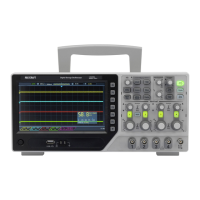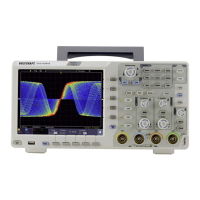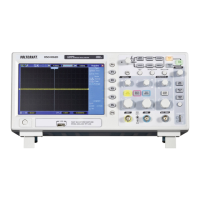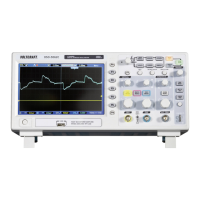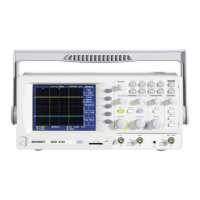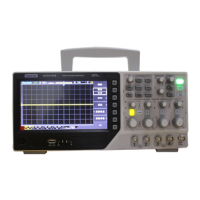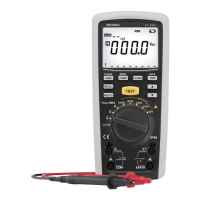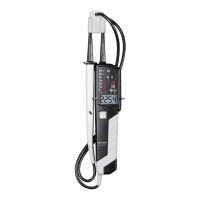
Do you have a question about the VOLTCRAFT DSO-2154 and is the answer not in the manual?
| Bandwidth | 150 MHz |
|---|---|
| Sample Rate | 1 GSa/s |
| Channels | 4 |
| Memory Depth | 40 Mpts |
| Display Resolution | 800 x 480 pixels |
| Weight | 3.5 kg |
| Time Base | 5 ns/div to 50 s/div |
| Display | 7" TFT Colour Display |
| Trigger Modes | Edge, Pulse, Video |
| Interfaces | USB, LAN |
| Math functions | FFT |
| Input Impedance | 1 MΩ |
| Input Voltage Range | ±400 V (DC + AC peak) |
Lists crucial safety precautions to prevent fire, personal injury, and equipment damage.
Defines warning, caution, and danger terms used in the manual and on the product.
Illustrates and describes safety symbols found on the oscilloscope and its accessories.
Provides an overview of the oscilloscope's front and rear panels and control areas.
Details the front panel layout, including display, buttons, knobs, and ports.
Describes the components located on the rear panel of the oscilloscope.
Explains the function and operation of the various control knobs and buttons.
Explains the various elements and indicators displayed on the oscilloscope screen.
Provides steps for performing a general inspection of the oscilloscope upon receipt.
Outlines procedures for verifying the basic functionality of the oscilloscope.
Guides users on how to properly compensate oscilloscope probes for accurate measurements.
Explains how to configure the probe's attenuation setting to match the oscilloscope's input.
Provides essential safety guidelines for using oscilloscope probes to prevent electric shock.
Details the procedure for self-calibration to ensure measurement accuracy.
Introduces the vertical controls, including channel settings and waveform adjustment.
Explains the horizontal controls for adjusting time base and waveform position.
Describes the trigger controls for stabilizing and capturing waveforms.
Details how to configure the vertical settings for individual channels and math functions.
Explains how to adjust the horizontal position and time base of waveforms.
Guides on setting up trigger types, sources, modes, and levels for stable acquisition.
Covers settings for sampling modes, persistence, and display types like XY and Counter.
Details methods for saving and recalling waveforms, configurations, and screen images.
Explains how to configure system settings like backlight, menus, and calibration.
Provides instructions for updating the oscilloscope's firmware via a USB memory device.
Covers automatic measurement of voltage and time parameters for signals.
Explains how to use cursors for precise time and voltage measurements on waveforms.
Details the functionality of executive buttons like Autoset, Run/Stop, and Copy.
Guides on installing software, connecting the oscilloscope, and configuring PC communication via USB.
Provides practical examples and step-by-step demonstrations of oscilloscope features and applications.
Addresses common problems like no display, unstable waveforms, and incorrect readings.
Lists detailed technical specifications covering bandwidth, sample rate, systems, and power.
Lists the standard accessories included with the oscilloscope.
Provides guidelines for general care and cleaning of the oscilloscope and probes.



